Grow Mini Carrots at Home? Absolutely! Imagine plucking the sweetest, most adorable little carrots straight from your own garden – it’s easier than you think, and I’m here to show you how. Forget those bland, store-bought carrots; we’re talking about vibrant, flavorful mini carrots bursting with freshness.
For centuries, gardening has been a way for people to connect with nature and provide for themselves. While large-scale farming has become the norm, the joy of nurturing your own food, even in a small space, is incredibly rewarding. Growing your own vegetables, like these delightful mini carrots, is a fantastic way to embrace that tradition and enjoy the fruits (or vegetables!) of your labor.
Why should you learn this DIY trick? Well, for starters, it’s incredibly satisfying! Plus, knowing exactly where your food comes from and how it’s grown gives you peace of mind. But more importantly, grow mini carrots at home allows you to control the quality and taste. You can choose organic methods, avoid harmful pesticides, and harvest them at their peak ripeness. Whether you have a sprawling backyard or just a sunny windowsill, I’ll guide you through the simple steps to cultivate your own miniature carrot patch. Get ready to impress your friends and family with your homegrown goodness!
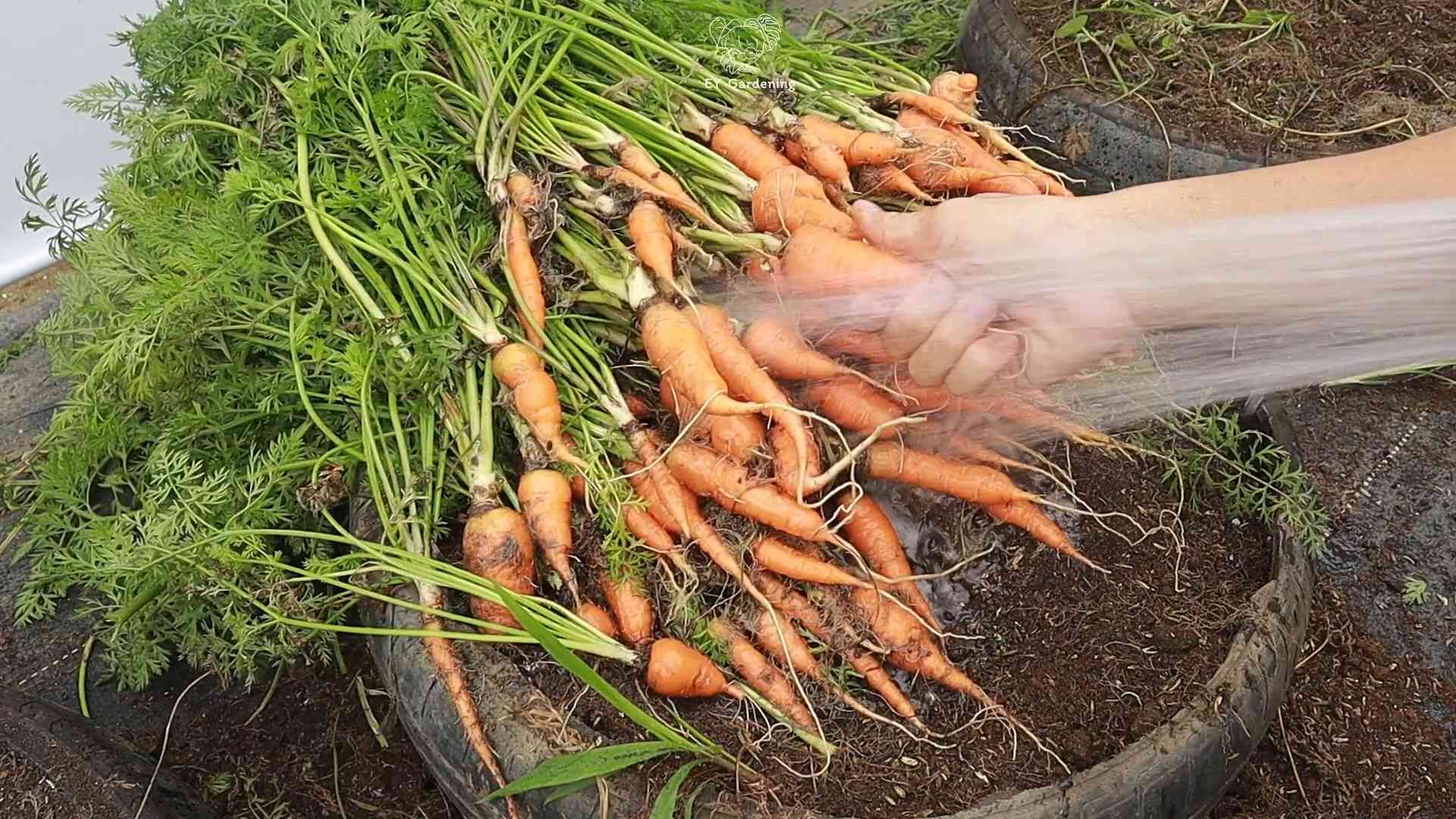
Grow Your Own Tiny Treats: A Guide to Growing Mini Carrots at Home
Okay, let’s get our hands dirty! I’m so excited to share my experience with growing mini carrots at home. It’s surprisingly easy and incredibly rewarding. Imagine popping those sweet, crunchy little carrots straight from your garden into your salad or as a healthy snack. This guide will walk you through everything you need to know, from choosing the right seeds to harvesting your miniature bounty.
Choosing the Right Carrot Variety
Not all carrots are created equal, especially when we’re aiming for miniature perfection. Some varieties are naturally smaller and mature faster, making them ideal for container gardening or small spaces.
* ‘Thumbelina’: This is my absolute favorite! These are round, almost like little radishes, and incredibly sweet. They’re perfect for kids (and adults!) who might be hesitant about eating regular-sized carrots.
* ‘Paris Market’: Similar to Thumbelina, these are also round and mature quickly. They’re known for their uniform size and smooth skin.
* ‘Little Finger’: As the name suggests, these are tiny, finger-shaped carrots. They’re slender and have a delicate flavor.
* ‘Short n Sweet’: This variety is a bit longer than the others, but still significantly smaller than standard carrots. They’re known for their sweetness and crisp texture.
When you’re buying seeds, make sure to check the packet for information about the carrot’s size and maturity time. This will help you choose the best variety for your needs and growing conditions.
Preparing Your Growing Space
Carrots need loose, well-drained soil to thrive. Rocky or compacted soil can lead to misshapen or stunted roots. Here’s how I prepare my growing space:
* Choose a sunny location: Carrots need at least 6 hours of sunlight per day.
* Select the right container (if using): If you’re growing in containers, choose one that’s at least 8-12 inches deep. This will give the carrots enough room to grow. Make sure the container has drainage holes to prevent waterlogging.
* Prepare the soil: This is the most important step! Carrots need loose, well-draining soil. I like to use a mix of potting soil, compost, and sand.
* Remove any rocks or debris: This is crucial! Even small rocks can interfere with root development.
* Amend the soil with compost: Compost adds nutrients and improves drainage.
* Consider adding sand: Sand helps to loosen the soil and improve drainage, especially if you have heavy clay soil.
* Test the soil pH: Carrots prefer a slightly acidic soil pH of 6.0 to 6.8. You can test your soil using a soil testing kit. If your soil is too alkaline, you can amend it with sulfur.
Planting Your Carrot Seeds
Now for the fun part! Planting the seeds is easy, but it’s important to do it correctly to ensure good germination.
1. Water the soil: Before planting, water the soil thoroughly. This will help to keep the seeds moist and improve germination.
2. Sow the seeds: Carrot seeds are tiny, so it’s easy to sow them too thickly. I like to use a seed dispenser or my fingers to space the seeds about 1/2 inch apart.
3. Cover the seeds: Gently cover the seeds with a thin layer of soil (about 1/4 inch).
4. Water gently: Water the soil gently to avoid disturbing the seeds. I like to use a watering can with a rose attachment.
5. Label your rows: This is especially important if you’re growing multiple varieties of carrots.
6. Consider succession planting: To enjoy a continuous harvest of mini carrots, sow seeds every 2-3 weeks.
Caring for Your Carrot Plants
Once your seeds have germinated, it’s important to provide them with the right care to ensure healthy growth.
* Watering: Carrots need consistent moisture, especially during germination and early growth. Water deeply when the top inch of soil feels dry. Avoid overwatering, which can lead to root rot.
* Thinning: This is crucial for growing healthy carrots. When the seedlings are about 2 inches tall, thin them to about 1-2 inches apart. This will give the carrots enough room to grow. Don’t be afraid to pull out the weaker seedlings. You can even eat the thinnings!
* Weeding: Keep the area around your carrots free of weeds. Weeds compete with carrots for nutrients and water. Hand-pull weeds carefully to avoid disturbing the carrot roots.
* Fertilizing: Carrots are not heavy feeders, but they do benefit from a light feeding of fertilizer. I like to use a balanced organic fertilizer. Avoid using fertilizers that are high in nitrogen, as this can lead to excessive foliage growth at the expense of root development.
* Pest control: Carrots are susceptible to a few pests, such as carrot rust flies and aphids.
* Carrot rust flies: These pests lay their eggs near the base of the carrot plants. The larvae then burrow into the roots, causing damage. To prevent carrot rust flies, cover your plants with row covers.
* Aphids: These small insects suck the sap from the leaves of carrot plants. You can control aphids by spraying them with insecticidal soap or neem oil.
* Sunlight: Ensure your carrots are getting at least 6 hours of sunlight per day. If you’re growing them indoors, you may need to supplement with grow lights.
Harvesting Your Mini Carrots
The best part! Harvesting your mini carrots is so satisfying.
1. Check the maturity time: The maturity time for mini carrots is typically 50-60 days. Check the seed packet for specific information.
2. Look for signs of maturity: The tops of the carrots should be visible above the soil. The carrots should be firm and brightly colored.
3. Harvest carefully: Gently loosen the soil around the carrots with a garden fork or trowel. Pull the carrots out of the soil by the tops.
4. Wash and enjoy: Wash the carrots thoroughly and enjoy them fresh from the garden!
Troubleshooting Common Problems
Even with the best care, you may encounter some problems when growing mini carrots. Here are a few common issues and how to address them:
* Poor germination: This can be caused by several factors, including old seeds, dry soil, or cold temperatures.
* Use fresh seeds: Carrot seeds have a relatively short shelf life, so it’s important to use fresh seeds.
* Keep the soil moist: Water the soil regularly to keep it moist, but not soggy.
* Provide warmth: Carrot seeds germinate best in warm temperatures (60-70°F).
* Forked or misshapen carrots: This is usually caused by rocky or compacted soil.
* Prepare the soil carefully: Remove any rocks or debris from the soil.
* Amend the soil with compost and sand: This will help to loosen the soil and improve drainage.
* Slow growth: This can be caused by several factors, including lack of sunlight, poor soil, or nutrient deficiencies.
* Ensure adequate sunlight: Carrots need at least 6 hours of sunlight per day.
* Amend the soil with compost: Compost adds nutrients and improves drainage.
* Fertilize lightly: Use a balanced organic fertilizer.
* Pests and diseases: Carrots are susceptible to a few pests and diseases.
* Carrot rust flies: Cover your plants with row covers.
* Aphids: Spray with insecticidal soap or neem oil.
* Leaf blight: Remove infected leaves and improve air circulation.
Extra Tips for Mini Carrot Success
Here are a few extra tips that I’ve learned along the way:
* Soak your seeds before planting: Soaking carrot seeds in water for 24 hours before planting can help to improve germination.
* Use a seed tape: Seed tapes make it easier to space the seeds evenly.
* Mulch around your plants: Mulch helps to retain moisture, suppress weeds, and regulate soil temperature.
* Rotate your crops: Avoid planting carrots in the same location year after year. This can help to prevent soilborne diseases.
* Don’t be afraid to experiment: Gardening is all about learning and experimenting. Try different varieties of carrots and different growing techniques to see what works best for you.
Enjoying Your Homegrown Mini Carrots
Now that you’ve grown your own mini carrots, it’s time to enjoy them! Here are a few ideas:
* Eat them raw: Mini carrots are delicious eaten raw as a snack or added to salads.
*
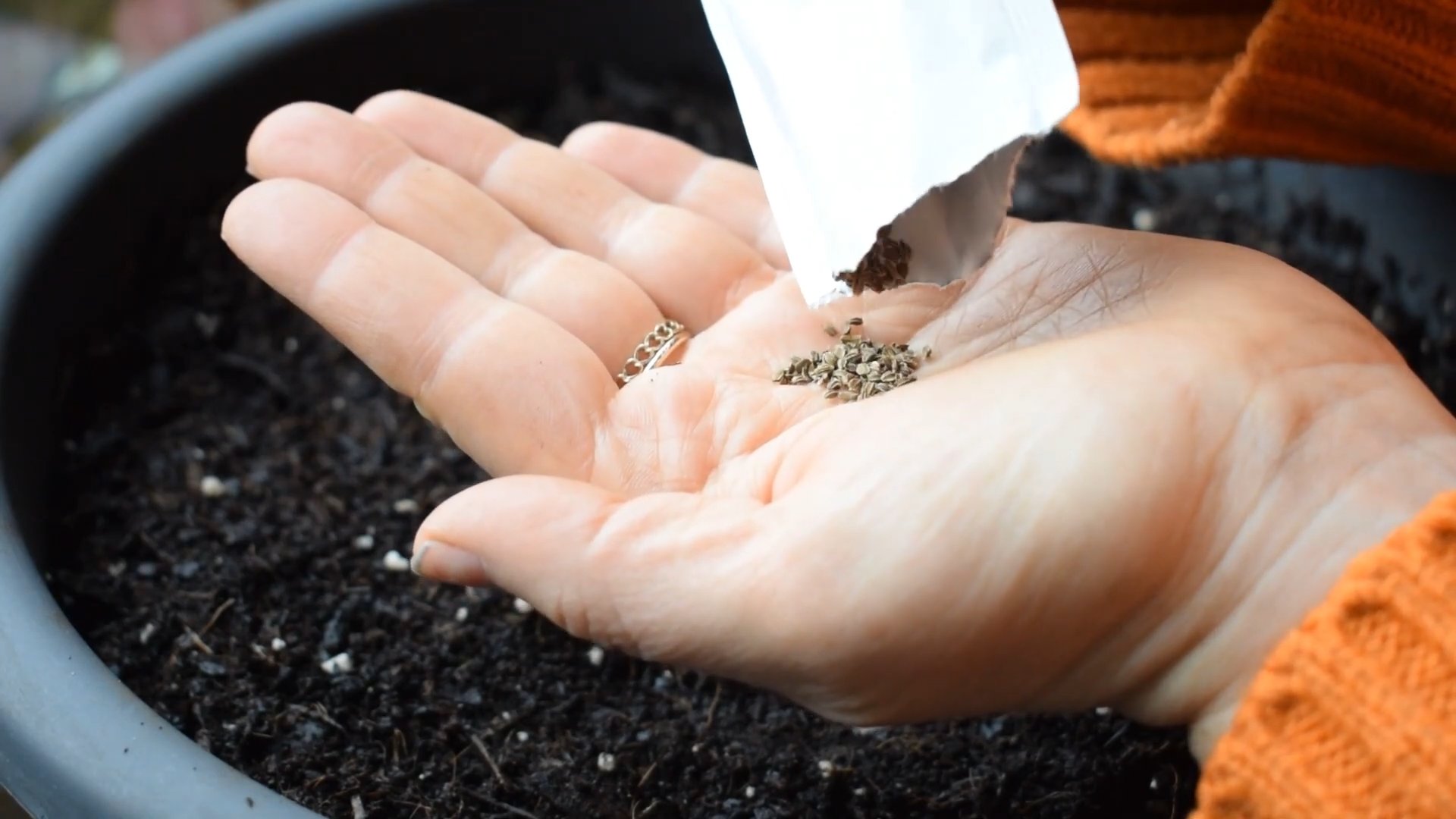
Conclusion
So, there you have it! Growing mini carrots at home is not only achievable but also incredibly rewarding. Forget those bland, store-bought baby carrots that lack real flavor. With this simple DIY trick, you can cultivate a vibrant harvest of sweet, tender mini carrots right in your own backyard, balcony, or even on a sunny windowsill.
Why is this a must-try? Because it puts you in control. You choose the variety, ensuring you get the flavor profile you crave. You control the growing conditions, guaranteeing a pesticide-free, organically grown treat. And you experience the unparalleled satisfaction of nurturing something from seed to table. Plus, let’s be honest, there’s something undeniably charming about pulling up a tiny, perfectly formed carrot that you grew yourself.
Beyond the basic method, there’s plenty of room for experimentation. Try different carrot varieties specifically bred for smaller sizes, such as ‘Parisian’ or ‘Thumbelina.’ These round carrots are particularly well-suited for container gardening and offer a unique visual appeal. You can also play with companion planting. Marigolds, for example, are known to deter nematodes, common pests that can affect carrot growth. Interplanting your mini carrots with herbs like rosemary or sage can also enhance their flavor and provide natural pest control.
Consider the soil composition. While the recipe calls for well-draining soil, you can amend it with compost or aged manure to boost nutrient levels and improve drainage. A slightly acidic soil pH (around 6.0 to 6.8) is ideal for carrots. You can test your soil pH with a simple kit available at most garden centers.
Don’t be afraid to get creative with your containers. While a standard pot works perfectly well, you could also repurpose old buckets, crates, or even grow bags. Just ensure that your chosen container has adequate drainage holes to prevent waterlogging.
Growing mini carrots at home is more than just a gardening project; it’s an opportunity to connect with nature, learn new skills, and enjoy the fruits (or rather, vegetables) of your labor. It’s a chance to introduce children to the wonders of gardening and teach them about where their food comes from. And it’s a way to add a touch of homegrown goodness to your meals.
We wholeheartedly encourage you to give this DIY trick a try. It’s easier than you might think, and the results are well worth the effort. Once you’ve harvested your first batch of homegrown mini carrots, we’d love to hear about your experience. Share your photos, tips, and any variations you’ve tried in the comments below. Let’s build a community of mini carrot enthusiasts and inspire others to embrace the joy of homegrown produce! So, grab your seeds, get your hands dirty, and prepare to be amazed by the deliciousness of your very own DIY mini carrots. Happy gardening!
Frequently Asked Questions (FAQ)
What is the best time of year to plant mini carrots?
The best time to plant mini carrots depends on your climate. In general, carrots are a cool-season crop, so the ideal planting times are spring and fall. For a spring crop, sow seeds as soon as the soil can be worked, typically a few weeks before the last expected frost. For a fall crop, plant seeds about 2-3 months before the first expected frost. In warmer climates, you can often grow carrots throughout the winter. Check your local planting calendar for specific recommendations based on your region.
How much sunlight do mini carrots need?
Mini carrots need at least 6 hours of direct sunlight per day to thrive. Choose a location that receives plenty of sunlight throughout the day. If you’re growing carrots indoors, supplement with grow lights if necessary. Insufficient sunlight can result in leggy growth and poor root development.
What kind of soil is best for growing mini carrots?
Well-draining, loose soil is crucial for growing healthy mini carrots. Carrots need room to expand underground, and compacted soil can lead to stunted or misshapen roots. Amend your soil with compost, aged manure, or other organic matter to improve drainage and fertility. Avoid soils that are heavy in clay, as they can be difficult for carrots to penetrate. A slightly acidic soil pH (around 6.0 to 6.8) is ideal.
How often should I water my mini carrots?
Water your mini carrots regularly, keeping the soil consistently moist but not waterlogged. Water deeply whenever the top inch of soil feels dry to the touch. Avoid overhead watering, as this can promote fungal diseases. Instead, water at the base of the plants. During hot, dry weather, you may need to water more frequently.
How long does it take for mini carrots to grow?
Mini carrots typically take 50-70 days to mature, depending on the variety and growing conditions. Check the seed packet for specific maturity times. You can start harvesting mini carrots when they reach your desired size. Don’t be afraid to pull up a few early to check on their progress.
Do I need to thin my mini carrots?
Yes, thinning is essential for ensuring that your mini carrots have enough space to grow. Once the seedlings are a few inches tall, thin them to about 1-2 inches apart. This will prevent overcrowding and allow the carrots to develop properly. Use small scissors to snip off the unwanted seedlings at the soil line, rather than pulling them out, which can disturb the roots of the remaining plants.
What are some common pests and diseases that affect mini carrots?
Common pests that can affect mini carrots include carrot rust flies, nematodes, and aphids. Carrot rust flies lay their eggs near the base of the plants, and the larvae burrow into the roots, causing damage. Nematodes are microscopic worms that can also damage the roots. Aphids are small, sap-sucking insects that can weaken the plants. To prevent pest problems, practice good garden hygiene, such as removing weeds and debris. You can also use organic pest control methods, such as insecticidal soap or neem oil. Common diseases that can affect mini carrots include leaf blight and powdery mildew. To prevent these diseases, ensure good air circulation and avoid overhead watering.
Can I grow mini carrots in containers?
Yes, mini carrots are well-suited for container gardening. Choose a container that is at least 6-8 inches deep and has adequate drainage holes. Use a well-draining potting mix and follow the same planting and care instructions as for growing carrots in the ground. Container-grown carrots may need more frequent watering and fertilization than those grown in the ground.
How do I know when my mini carrots are ready to harvest?
You can harvest mini carrots when they reach your desired size. Gently loosen the soil around the carrots and pull them up by the tops. If the soil is dry, water it beforehand to make harvesting easier. You can also use a garden fork to lift the carrots out of the ground.
How do I store my harvested mini carrots?
To store your harvested mini carrots, remove the tops and gently wash them. Pat them dry and store them in a plastic bag or container in the refrigerator. They should last for several weeks. You can also freeze mini carrots for longer storage. Blanch them in boiling water for a few minutes, then cool them in ice water before freezing.

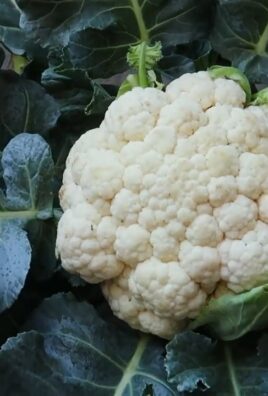
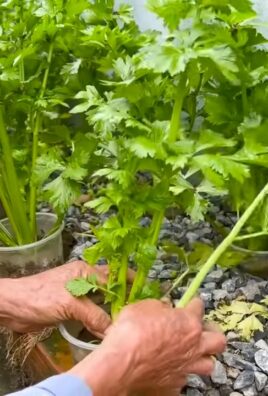
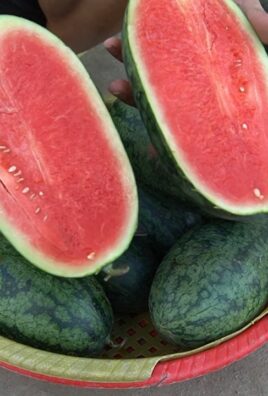
Leave a Comment